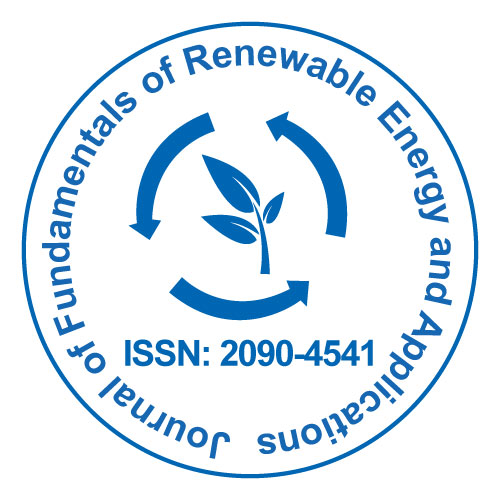
Journal of Fundamentals of Renewable Energy and Applications
Open Access
ISSN: 2090-4541

ISSN: 2090-4541
Peter D Lund
Aalto University, Finland
Posters & Accepted Abstracts: J Fundam Renewable Energy Appl
The fuel cell is a future energy technology for efficient and clean conversion of fuel to power with applications from small portable devices to mobile and stationary uses. Solid oxide or ceramic fuel cells (SOFCs) are a promising fuel cell technology, but they are not yet fully commercial. The limited ionic conductivity of yttrium-stabilized zirconia (YSZ) electrolytes used in SOFC requires a high temperature (800-1,000°C), which imposes a major challenge on material durability and costs. To improve their competitiveness, new directions have been suggested such the intermediate temperature or lowtemperature solid oxide fuel cells, which employ nanocomposite structures and operate below 600°C. For example, LT-SOFC based on Ce0.85Sm0.15O2 and a eutectic mixture of [Na2, Li2, K2] CO3 has reached a power density above 1 Wcm-2 at 550oC. Single component fuel cell is another interesting development, which employs a mixture of ionic conductor and semiconductor, e.g. a LSCF perovskite and Sm-Ca-co-doped ceria (SCDC) nanocomposite heterostructure, or Sm-doped ceria and NiZnoxide nanocomposite. This approach integrates the cathode, electrolyte, and anode into one homogenous structure. Other new materials of interest include e.g. YSZ- and SDC-SrTiO3. Performance results of these designs are around 500-600 Wcm-2 at 500°C, the best exceeding 1 W cm-2. A traditional SOFC closest to this design reaches around 400 Wcm-2 at 700°C. Though the new developments in nanocomposite based ceramic fuel cells show a promise for low-cost mass-production due to lower operational temperature and high power density, further research both on materials, cell structures, and stack design will be necessary. This in turn will require use of more sophisticated tools such as computational quantum mechanical modeling for better material design, 3D microscopy and tomography to link structures and performance, and atomic scale material tailoring e.g. with atomic layer deposition (ALD) to construct topological interfaces and catalysts, which could enhance fuel cell performance. Importantly, the new developments would also benefit from more standardized experimental and testing procedures, and addressing engineering and stability issues when moving towards practical applications.
E-mail: peter.lund@aalto.fi